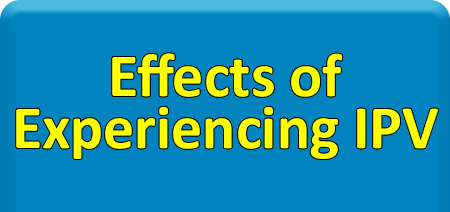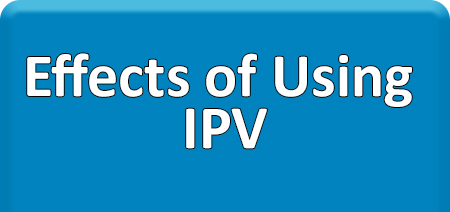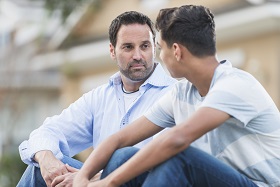VHA Social Work
Intimate Partner Violence Assistance Program (IPVAP) - VETERANS & PARTNERS - What Is IPV?
 |
 |
 |
 |
 |

Intimate Partner Violence (IPV) impacts families in a variety of ways.
Family Dynamics 1*, 2*
When violence is present in the home, there are often problems in family functioning and the quality of relationships. The presence of IPV adds significant stress to both parties in a relationship, which can have a direct effect on the well-being of the child.
How does IPV impact family members?
Click the links below to learn how IPV affects the family from pregnancy to adolescence.
| - Pregnancy | - Parents | - Infants |
| - Preschool age 3-6 | - Middle Years age 7-11 | - Adolescence age12-17 |
Pregnant Women1*:
- In some cases, IPV begins or increases during pregnancy.
- May be more likely to experience low maternal weight gain and more prone to hemorrhage, infections, anemia, and caesarean sections.
- Babies born to mother who experience IPV during pregnancy may be at higher risk for birth complications and low birth weight.
- Are at higher risk for unintended pregnancy.
- May have more difficulty being open, sensitive, joyful, and maternal.
- May have more negative thoughts of their unborn babies than those who did not.
- Are more likely to report difficulty caring for their newborns, anger, anxiety, and depression.
Parents1*, 2*:
- Couples experiencing IPV often struggle to be the parents they want to be.
- Abuse can lower a parent’s confidence and self-esteem.
- Battered women and their violent partners often lack the support and resources to face the stresses parenting brings and may act out with anger and hold back physical and emotional care.
Infants1*:
Infants born in homes where IPV is present may be premature, have a low birth weight, are more likely to get sick, and display excessive crying, feeding, and sleeping problems. The risk of child abuse increases because infants exposed to IPV may be more challenging to care for.
Preschool Children (3-6 years old) 1*, 2*, 3*:
- Because young children cannot distance themselves from their parents, they are often are present to witness the conflict, or they hide, withdraw into fantasy, or shut down (emotional numbing).
- This age group are likely to have disturbances in their sleep including nightmares and difficulty going to sleep.
- This age group does not have the maturity to put their fears and concerns into words, so they are likely to have emotional and behavioral problems including temper tantrums and acting out behavior.
- They may experience changes in the way they are able to think, pay attention, learn, and remember.
- They are more likely to have developmental delays and score lower on verbal skills and memory functioning.
- Preschool age children exposed to low levels of IPV had IQs approximately 1 point lower than children not exposed, medium levels had IQs 5 points lower, and those exposed to high levels of violence had scores 8 points lower.
Middle Childhood (7-11 years old) 1*, 2*, 3*:
- Children who witness family violence have greater difficulty with expressing and managing their emotions and have social and academic problems.
- It is harder for them to form good friendships.
- They may have problems with anxiety and depression which affects the way they learn and their ability to be successful in school.
- Children exposed to IPV may be at a high risk of Post-Traumatic Stress Disorder.
- Some children feel “caught in the middle” between parents, feeling pressure to be loyal to one parent or the other causing conflict in the relationships.
- Children in this age group may turn to gangs, drugs or alcohol to escape or cope.
Adolescents (12-17 years old) 1*, 3*:
- When a youth is in a home where IPV is present, it is not uncommon for one child to be forced into an adult role, such as caretaking of younger siblings.
- Teens may also feel shame and embarrassment about their families and life at home.
- Some teens will make poor, unsafe choices to try to fit in with their peers.
- Others will explore sexually for comfort or control, cope by using drugs, or shut down emotionally.
- They have difficulty forming close friendships and later, have a hard time having healthy romantic partners.
- Children exposed to IPV in childhood may later use violence in intimate relationships or become a victim of violence by a partner.
Additional problems may occur with IPV 1*, 3*
Intimate partner violence is often accompanied by alcohol or drug use. These environments are unpredictable and threatening for children. This affects the way they develop their ability to control or manage their emotions and behaviors. Children who witness violence can develop a perception that violence or aggression are acceptable ways to handle conflict.
If you have concerns about what’s happening in your relationship, contact us. We’re here to listen and support you!
References
1. Graham-Bermann, S. A. & Levendosky, A.A. (Eds.). (2011). How Intimate Partner Violence Affects Children. Washington, DC: American Psychological Association. https://www.amazon.com/Intimate-Partner-Violence-Affects-Children/dp/1433809303
2. Huth-Bocks, A. C.,Hughes, H. M. (2008). Parenting Stress, Parenting Behavior, and Children’s Adjustment in Families Experiencing Intimate Partner Violence. Journal of Family Violence, Volume 23 (issue 4). Retrieved from https://www.researchgate.net/profile/* https://www.researchgate.net/publication/226989000_Parenting_Stress_Parenting_Behavior_and_Children%27s_Adjustment_in_Families_Experiencing_Intimate_Partner_Violence*
3. Wathen, C. N., MacMillan, H. L. (2013). Children’s Exposure to Intimate Partner Violence: Impacts and Interventions. Pediatrics Child Health, Oct;18(8):419-22. Retrieved from https://www.ncbi.nlm.nih.gov/pubmed/ - https://www.ncbi.nlm.nih.gov/pubmed/?term=Children%E2%80%99s+Exposure+to+Intimate+Partner+Violence%3A+Impacts+and+Interventions.*
For more information or assistance, contact your local Intimate Partner Violence Assistance Program, Primary Care Social Worker, or other Provider. Women Veterans can also ask for the Women Veterans Program Manager.
Not yet a patient at VA? - Apply Now
Find help in the community by calling the National Domestic Violence Hotline at 1−800−799−7233 (SAFE) or TTY 1−800−787−3224.
* Links with an asterisk (*) next to them will take you outside the VA website. VA is not responsible for the content of the linked site. This link does not constitute endorsement of the non-VA website or its sponsor.























